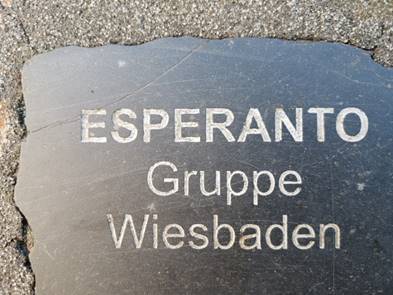
FAQ About The Influence of Esperanto on Global Culture

What is Esperanto and who invented it?
Esperanto is a constructed international auxiliary language created to facilitate communication between speakers of different native languages. It was invented by L. L. Zamenhof, a Polish ophthalmologist, in 1887. Zamenhof designed Esperanto to be easy to learn, with a regular grammar and vocabulary drawn from several European languages.

How has Esperanto influenced global culture?
Esperanto has influenced global culture by fostering international communication and understanding among diverse communities. It has facilitated cultural exchanges, international conferences, and events such as the World Esperanto Congress. Additionally, Esperanto literature has contributed to global culture with original literary works and translations.

What are some examples of Esperanto literature?
Esperanto literature includes a range of original works and translations. Notable original authors include William Auld, who was nominated for the Nobel Prize in Literature, and Kálmán Kalocsay. Esperanto translations include classics from various languages, such as 'The Little Prince' and 'Alice's Adventures in Wonderland.'

How many people speak Esperanto today?
While exact numbers are difficult to ascertain, estimates suggest that between 100,000 and 2 million people speak Esperanto worldwide. The community includes a small number of native speakers, comprising children raised in Esperanto-speaking households.

What role does Esperanto play in modern cultural exchanges?
Esperanto plays a significant role in modern cultural exchanges by serving as a neutral communication medium. It is used in international meetings, online communities, and cultural gatherings to promote peaceful dialogue and understanding between people of different backgrounds. Platforms like the Universal Esperanto Association facilitate these exchanges.

Are there any countries where Esperanto is an official language?
Esperanto is not an official language in any country. However, it has gained recognition in certain capacities, such as its role in fostering international communication and cultural understanding. Various local and international organizations promote its use in global dialogue.

How is Esperanto used online?
Esperanto is widely used online through forums, social media, and websites dedicated to language learning and cultural exchange. Platforms like Lernu! and Duolingo offer courses in Esperanto, allowing users from around the world to learn the language and participate in digital communities.

What is the World Esperanto Congress?
The World Esperanto Congress is an annual event where Esperanto speakers from around the world gather to promote communication, exchange ideas, and celebrate Esperanto culture. It typically includes lectures, cultural performances, and discussions on global issues, all conducted in Esperanto.

How has Esperanto influenced literature in other languages?
Esperanto has contributed to literature in other languages by providing translations of its original works, which have been appreciated for their literary quality. Moreover, the ideals behind Esperanto—such as fostering unity and understanding—have inspired writers and thinkers across linguistic and cultural boundaries.

Why was Esperanto created?
Esperanto was created to address the problem of communication barriers between people of different native languages. Zamenhof's vision was to establish a neutral, easy-to-learn language that would foster peace and understanding across diverse cultures, thereby reducing linguistic and national conflicts.

How is Esperanto taught and learned today?
Esperanto is taught through various channels, including online courses, local clubs, and university classes. Resources like Duolingo, Lernu!, and local Esperanto organizations provide structured courses and interactive learning experiences, making it accessible to learners globally.

Has Esperanto appeared in popular media or entertainment?
Yes, Esperanto has made appearances in popular media and entertainment. It has been featured in films like 'Gattaca,' TV series such as 'Red Dwarf,' and music by artists who appreciate its cultural and philosophical values. These appearances often introduce Esperanto to wider audiences.

What are some common misconceptions about Esperanto?
A common misconception about Esperanto is that it is an artificial language with no real-world application or cultural value. On the contrary, Esperanto has a vibrant community, literature, and cultural events. Another misconception is that it was intended to replace national languages, while its goal was always to serve as a complementary universal language.

How does Esperanto facilitate cultural understanding?
Esperanto facilitates cultural understanding by providing a neutral linguistic platform where speakers can engage on equal terms. This encourages dialogue and collaboration without the dominance of native languages, fostering mutual respect and appreciation among culturally diverse communities.

Are there any notable events or festivals dedicated to Esperanto?
Yes, there are several notable events and festivals dedicated to Esperanto. Apart from the World Esperanto Congress, there are regional meetings, youth events like the International Youth Congress, and cultural festivals such as the Festival of Esperanto Culture, celebrating the language's artistic expressions.

What are the linguistic features of Esperanto that make it easy to learn?
Esperanto is designed for ease of learning with features such as a simple and regular grammar, phonetic spelling, and a vocabulary that draws on multiple European languages. These aspects reduce the learning curve, enabling speakers of diverse native languages to quickly acquire proficiency.

Has Esperanto been recognized or supported by any international organizations?
Yes, Esperanto has received recognition from some international organizations over the years. For instance, the United Nations Educational, Scientific and Cultural Organization (UNESCO) has passed resolutions supporting the cultural and educational values of Esperanto.

What challenges does Esperanto face today?
Esperanto faces several challenges, such as limited mainstream adoption and competition with dominant global languages like English. Additionally, raising awareness and interest among younger generations and ensuring representation in digital communication platforms continue to be ongoing challenges for the Esperanto community.

Can Esperanto speakers contribute to international diplomacy?
Esperanto speakers can contribute to international diplomacy by promoting dialogue and understanding among nations, especially in contexts where a neutral language can facilitate negotiations and cultural exchanges. While Esperanto itself is not used in formal diplomacy, the community advocates for peaceful international cooperation.

How is Esperanto perceived in different parts of the world?
The perception of Esperanto varies globally. In some regions, it is seen as a curious linguistic project, while in others, particularly within its active communities, it is respected as a valuable tool for intercultural communication. Overall, it maintains a niche but dedicated presence worldwide.
